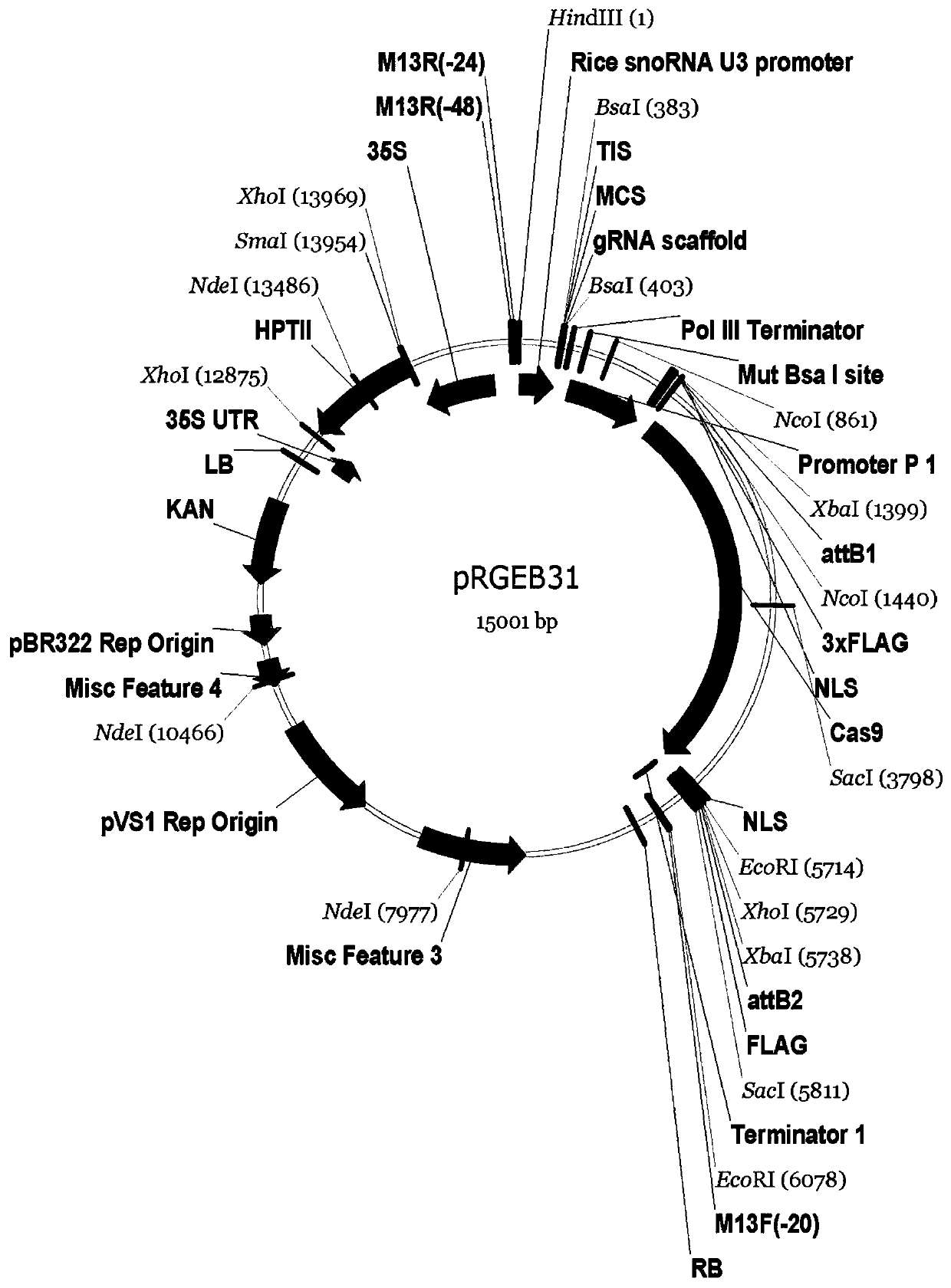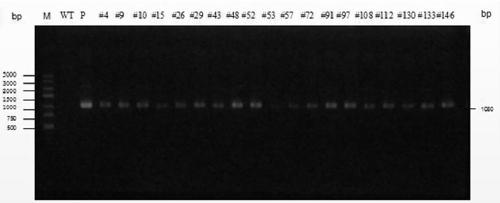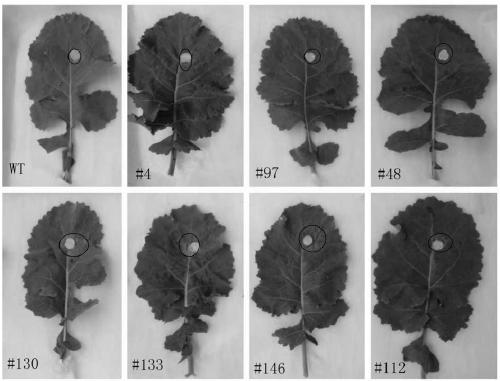Brassica napus gene BnTNLR1, and application thereof in resisting sclerotinia sclerotiorum
A technology for Brassica napus and Sclerotinia sclerotiorum, which is applied in the fields of application, genetic engineering, plant genetic improvement, etc., can solve the problems of less research on the TNL disease resistance gene family of rapeseed.
- Summary
- Abstract
- Description
- Claims
- Application Information
AI Technical Summary
Problems solved by technology
Method used
Image
Examples
Embodiment 1
[0045] Example 1: BnTNLR1 Obtaining Gene Edited Mutant Plants
[0046] One, test material: the test material in this experiment is Brassica napus line 5147B. The exogenous plasmid used for transformation is the pRGEB31-Cas9-BnTNLR1 plasmid carrying the Cas9 endonuclease gene and gRNA, which also contains the hygromycin resistance selection marker gene for gene editing transformation plant selection, which is regulated by the 35S promoter The regulatory map of the pRGEB31-Cas9-BnTNLR1 plasmid is as follows figure 1 shown. BnTNLR1 Gene target sequence: GGGAAAGAAACCGTCAGAAA TGG (TGG is the PAM sequence).
[0047] 2. Experimental method: In this experiment, pollen-mediated transformation was used. The test material Brassica napus line 5147B was planted in the experimental field of Shanxi Academy of Agricultural Sciences. The specific operation method is as follows:
[0048] (1) In April 2019, the transformation experiment was carried out when the Brassica napus line 5147B...
Embodiment 2
[0063] Example 2: Antibacterial Sclerotinia Identification of Rapeseed Gene Edited Mutant Plants
[0064] 1. Test materials: wild-type plants and mutant plants.
[0065] 2. Experimental method
[0066] A. Analysis of leaf sclerotinia resistance: the wild type and mutant rapeseed leaves at the same position at the 7-8 leaf stage planted in the greenhouse of Shanxi Academy of Agricultural Sciences were used to inoculate sclerotia at the same position of the leaves. After 48h and 72h, the size of the leaf lesion was observed and photographed.
PUM
 Login to View More
Login to View More Abstract
Description
Claims
Application Information
 Login to View More
Login to View More - R&D
- Intellectual Property
- Life Sciences
- Materials
- Tech Scout
- Unparalleled Data Quality
- Higher Quality Content
- 60% Fewer Hallucinations
Browse by: Latest US Patents, China's latest patents, Technical Efficacy Thesaurus, Application Domain, Technology Topic, Popular Technical Reports.
© 2025 PatSnap. All rights reserved.Legal|Privacy policy|Modern Slavery Act Transparency Statement|Sitemap|About US| Contact US: help@patsnap.com



